JTF (just the facts): Published in 2015 by b.frank Books (here). Newsprint, 80 pages in 5 sections, with 677 black and white and color images. Includes 70 articles/essays by the artist and various staff members (past and present) of The Philadelphia Inquirer (a complete list of contributors can be found on the artist’s website). (Front page cover and spread shots below.)
Comments/Context: For most of us, the slow decline of the newspaper business is something that is relatively abstract – we undeniably know it’s happening, but it’s going on largely offstage, so we aren’t forced to face its harsh realities very often. While reports of falling advertising revenues, winnowing circulations, newsroom layoffs, and grim looking bankruptcy balance sheets have become the norm rather than the exception these days, many of us have seamlessly substituted a digital version of the newspaper into our daily lives and thought little of what that simple behavioral change means to the ongoing business of providing the news.
Will Steacy’s ambitious photobook/newspaper tells the often dispiriting story of the evolving transformation of the newspaper industry, and does so from the inside of one our nation’s most notable papers, The Philadelphia Inquirer. Combining Steacy’s own photographs of the newsrooms and the printing plant, reproductions of family ephemera, and dozens of articles, essays, and reminiscences from current and former staff members, it’s an anything-but-abstract first-hand witness account of five tumultuous years (2009-2013) in the paper’s recent history. Reading its pages is like watching a slow motion car crash, where the outcome is entirely predictable but little can be done to avoid the disaster except to brace for the inevitable impact.
The newspaper business runs deep in Steacy’s family, stretching back some five generations. Steacy’s father, Tom, worked at the Inquirer for nearly 30 years, and in a cruel turn of fate, was laid off from his editorial job there in 2011 in the middle of his son’s project. Given these circumstances, we might reasonably expect some bitterness and frustration to linger in the artist’s mind, but his project is really a loving celebration of the vital importance of newspapers in general and of the Inquirer in specific. If Steacy is frustrated, it isn’t with the newspapermen – it’s with a contemporary society that can’t seem to figure out how to value what newspapers deliver.
Perhaps with a knowing reference to the instant consumption of today’s Internet news, Deadline is a dense publication that resists a quick summarizing flip – if you are determined to read each and every article and image caption, be prepared to settle in for several engaging hours. The essays have been contributed by a wide range of writers, from managing editors and copy clerks to Pulitzer Prize winning investigative reporters and operations staff, with the common thread being an unvarnished look at what it was like to work in that particular place, or in their parlance, to be part of the “tribe”. From foreign bureau chiefs and art department staff alike, there is an overriding sense of purpose in these voices, a confident (sometimes swaggering) opinion that what they have done and continue to do truly matters (especially locally), and that the passion and dedication they bring to their efforts are part of both a duty and a responsibility to the community they serve. Their words are full of inspiration, ambition, and care, with greatness hanging in the balance. It is not without some real pride that they recount tales of fraud, corruption, police brutality, mistaken convictions, and other political and social misdeeds that they have uncovered and played a part in fixing. Together, their words make a persuasive case for the importance of a newspaper to its community, and quietly make the corollary argument that the fabric of that very same community will likely begin to unravel without the vigilance and attention paid by its professional journalists.
Of course, photographing “purpose” isn’t exactly straightforward or easy. Steacy’s pictures are consistently formal, mixing carefully composed views of the newsroom and portraits of staff members at work with smaller representative still life details providing depth and history. Modern warrens of cubicles and conference rooms give way to closer in studies of cluttered desks, woefully outdated computers, and towering stacks of paper. The images pull back and forth, pitting progress against tradition again and again: spiral bound reporter notebooks, old school typewriters, tangled film negatives, and worn rubber stamps are juxtaposed with thick bunches of overhead server cables and endless boxes of iPhones ready to be distributed to reporters. World clocks cover an interior column, reminding us of the broader reach of the news, while a gallon can of rubber cement stands at the ready, dragging us back to the physical and mundane; if we were worried about the revenue side of the house, the plastic inboxes for deadline ads and future ads both stand ominously empty. A timelapse series of photographs of editor Don Sapatkin’s desk retells the downward spiral story in just a handful of sequential pictures – his immensely cluttered desk overflowing with papers empties out in stages, moving from insane to busy to tidy to sparse to gone entirely in the span of roughly three years.
Other sections of Deadline fill in additional background on the Inquirer‘s long history. Older photos of key staff members (many with 1970s era facial hair and wide ties) provide a time capsule-like look back at the making of important stories and moments. Memorable front pages fill one full page array, while Pulitzer Prize winning stories fill another. As the ongoing thinning of newspaper’s once vibrant core has continued, some nostalgia for the good old days has certainly developed (however tough and exhausting those days actually were), but those misty-eyed moments seem to have been largely tempered by the need to stay focused on getting today’s job done right.
The personal story of the Steacy newspapermen gets its own section, with more than a century of family photos, letters, and other ephemera filling the pages of Deadline edge to edge. From the artist himself, to father and grandfather, and even farther up the line (for a total of 144 years), the pictures tell a story of dedication and hard work, with families, identities, and daily life densely intertwined with the workings of the various newspapers. As they say, they have ink in their blood.
Steacy’s trips out to the printing plant feel particularly anachronistic in today’s digital age. Massive warehouse-sized presses churn out papers from immense paper rolls, with the physicality of plates, ink, and rolling sheets captured with visceral energy and vitality, like Margaret Bourke-White’s industrial scenes from the 1930s. Once the papers are done, an entire process of sorting, binding, and mailing begins, with trucks filled with stacks of papers waiting at the ready to deliver the news out to the people. These photographs are brimming with 21st century mechanization and can-do worker spirit, and yet they feel impossibly doomed, like quaint artifacts from a bygone era.
The final section of the paper chronicles the newspaper’s move from its storied 86-year home in the “Tower of Truth” to a more economical and smaller space. For many, this move seems to have been deeply symbolic, a last-straw giving up on the cherished history and traditions of the Inquirer. Steacy’s photographs capture the depressing and often ugly process of leaving, from desks being packed up and cubicles being broken down to cut wires, abandoned chairs, logo stripped walls, and trash covered floors. A full page color spread of the once noisy, bustling, place-where-it-all-happened newsroom reduced to a cavernous empty space, with stained ghosts of removed desks on the now dirty carpet, tells the whole painful story in one poignant image.
Part of what makes Deadline one of the best photobooks of the year is its spirit. In turns, it is thoughtful and insightful, sympathetic and supportive, melancholic and deeply personal, but in the end, it is a fighting book. It defiantly stands up and makes a case for the enduring value of newspapers, when the prevailing tide would expect a meeker response. While it offers no specific answers to the economic conundrum facing the industry, it offers us a penetrating window into the tangled problem and an emphatic shout of solidarity with those who continue to soldier on against increasingly unlikely odds. Interestingly enough, Deadline may end up being both a lasting memorial to a dying breed and an enthusiastic rallying cry for investing our emerging online alternatives with the best of the unswerving tenaciousness of the disappearing era. There was (and still is) greatness of deed and word taking place at The Philadelphia Inquirer and Steacy’s book tells that story in a way that should encourage us to rise up and ensure that we don’t lose track of that magic.
Collector’s POV: Will Steacy is represented by Christophe Guye Gallery in Zurich (here). His work has little secondary market history, so gallery retail remains the best option for those collectors interested in following up.
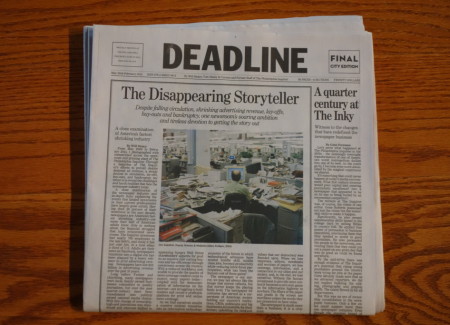
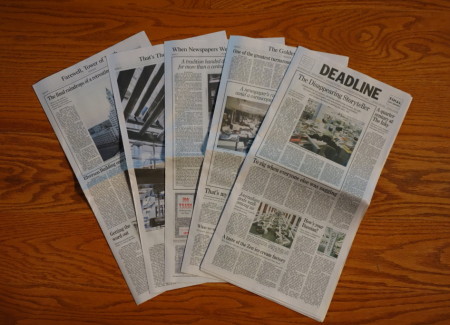
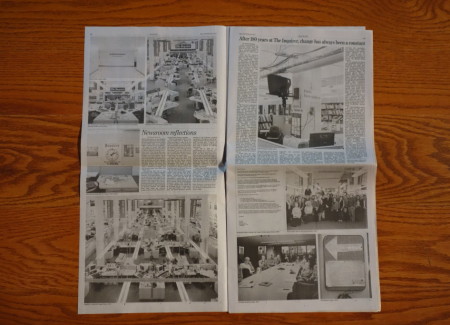
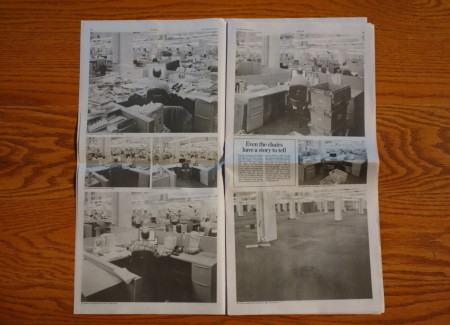
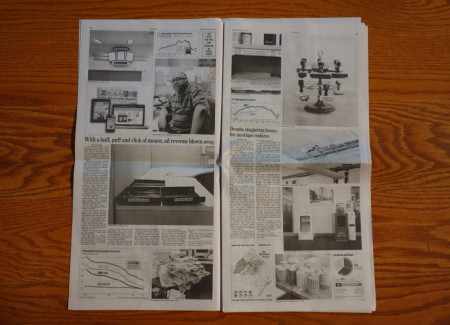
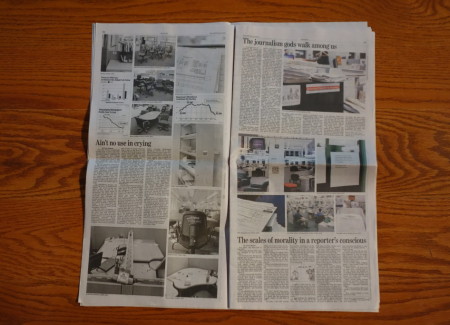
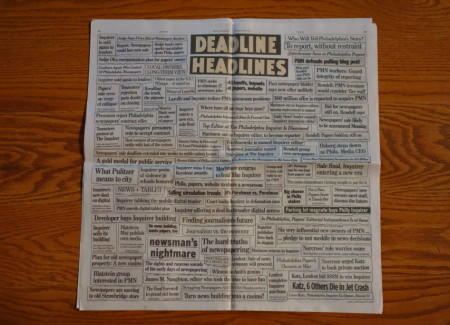
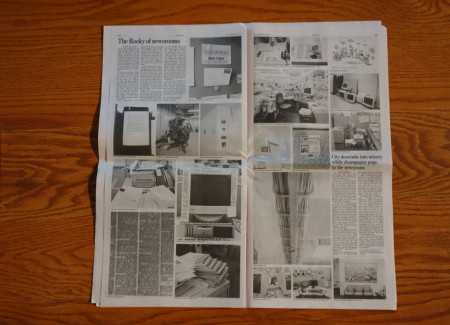


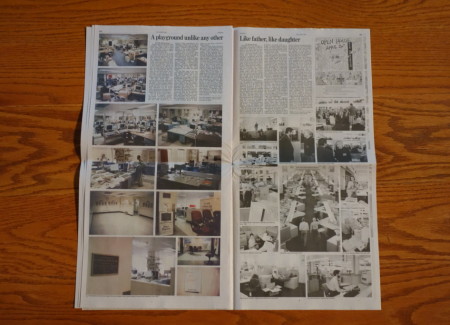
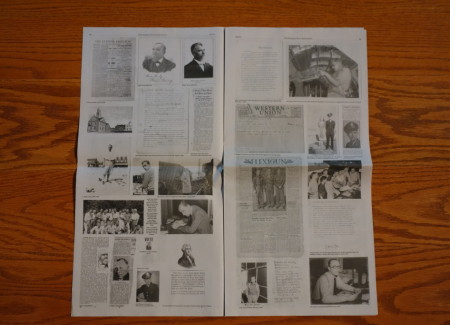
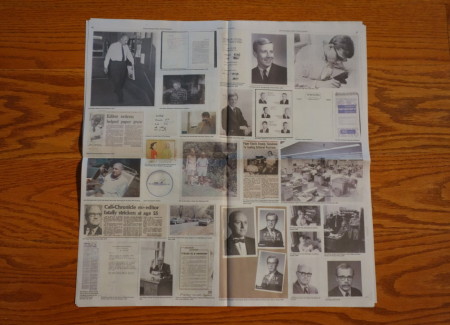
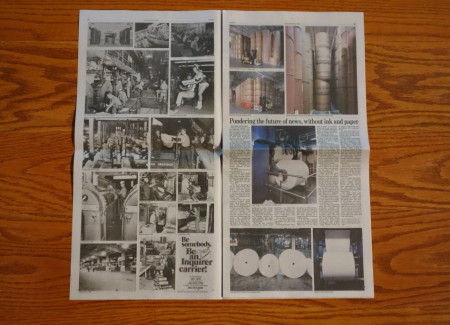

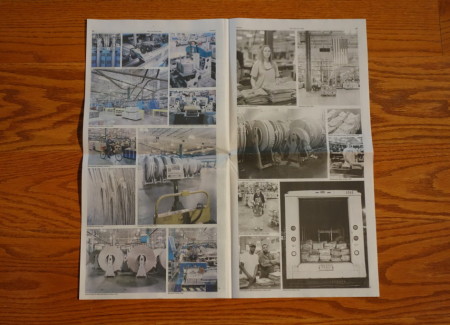






Kickstarter backers are still waiting on their product and Will won’t provide updates via email or via his comment section.